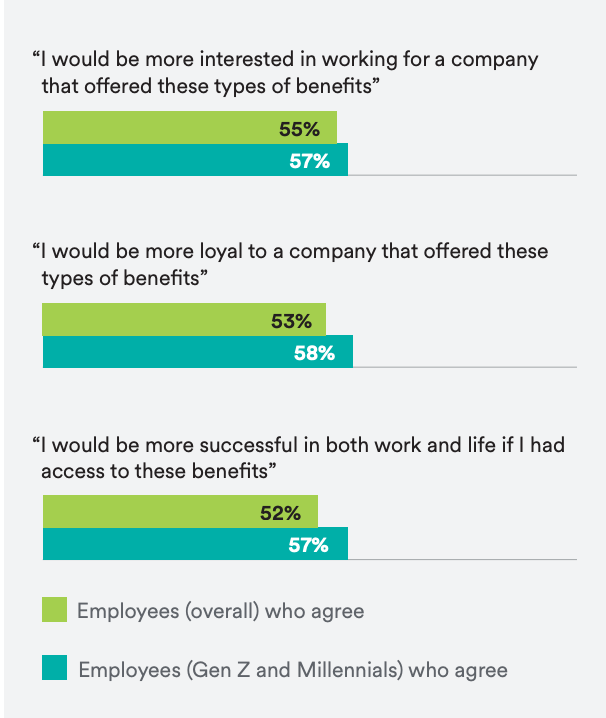Companies keep coming up with time-saving benefits to help employees. Valet services, on-site dry cleaners, and concierge services are all well and good, but a new study suggests that employees don’t want perks that save time as much as they want their companies to just give them more free time.
MetLife recently released a study of 2,600 full time U.S. workers, asking what emerging benefits those workers wanted most and 72% said unlimited paid time off (PTO). This was closely followed by wellness programs that reward healthy behavior, phased retirement programs, and paid sabbatical programs. The full rankings are below.
#1. 72% Unlimited paid time off
#2. 69% Wellness programs that reward healthy behavior
#3. 68% Phased retirement program
#4. 66% Paid sabbatical program
#5. 61% On-site free/subsidized services (e.g., meals, gym, dry cleaning)
#6. 59% On-site health/medical care (including mental health)
#7. 54% The ability to work abroad or take work assignments in a foreign country
#8. 44% Concierge program (e.g., assistance with booking reservations)
#9. 38% Genetic testing
#10. 33% Subsidized egg freezing
#11. 32% Gender reassignment support/subsidy

Emerging benefits augment traditional benefits and bridge the gap between an employee’s work and personal life. While some “emerging benefits” have been in existence for some time, others are new, such as genetic testing, subsidized egg freezing, and gender reassignment support.
Interestingly, this list of preferred benefits was consistent across age demographics. Among Gen Z workers, 73% said they would be attracted to unlimited PTO. Eighty percent of millennials, 70% of Gen Xers, and 63% of baby boomers agreed.
It’s not just employees that can gain from emerging benefits. Those offerings can help companies too. Employees said they would be interested in working with companies that offered emerging benefits, indicating that these benefits could increase hiring and retention. Furthermore, employees said that these opportunities would make them more loyal to the company and would help them do their jobs better, leading to greater productivity and engagement.
Is Unlimited PTO Possible?
Organizations like Workday, GitHub, Kronos, and Netflix are just some of the companies that have instituted an unlimited PTO policy. But before rushing into add this new benefit, the policy has to be considered carefully, asking questions such as:
- Are all employees in all positions eligible, and what are the ramifications for those who are not?
- Are any positions adversely impacted?
- Do employees need to be at the company for a certain amount of time before they can use the benefit?
- How should a manager determine how many people can be out on unlimited vacations at the same time?
While those details need to be nailed down, a primary question is this: how does an unlimited PTO policy fit with the company culture? If the culture values flexibility, trust, respect, and motivation, an unlimited PTO policy may be successful. If the culture is more hierarchical and work is judged by time spent on it, versus outcome, or where distrust exists between employees and managers, an unlimited PTO policy will fail.
Options Besides Unlimited PTO
Even if unlimited PTO is not in an organization’s plan, a company can still do more to answer employees’ desire for more free time. Offer flexibility, whether it is the ability to work remotely, to have a flexible schedule, or to take time as needed through generous leave policies and additional vacation days.
Ask what benefits employees want, through surveys and conversations; then look for ways to offer them. Wellness programs, which were the second most requested benefit mentioned in the survey, can begin with small steps.
The lines that separate personal and professional lives has blurred, and as they have, the expectations have changed about the support companies should provide to employees. Companies at the forefront of offering these emerging benefits know that the key to keeping their workforce strong and productive is to provide benefits that will keep employees healthy and happy.












